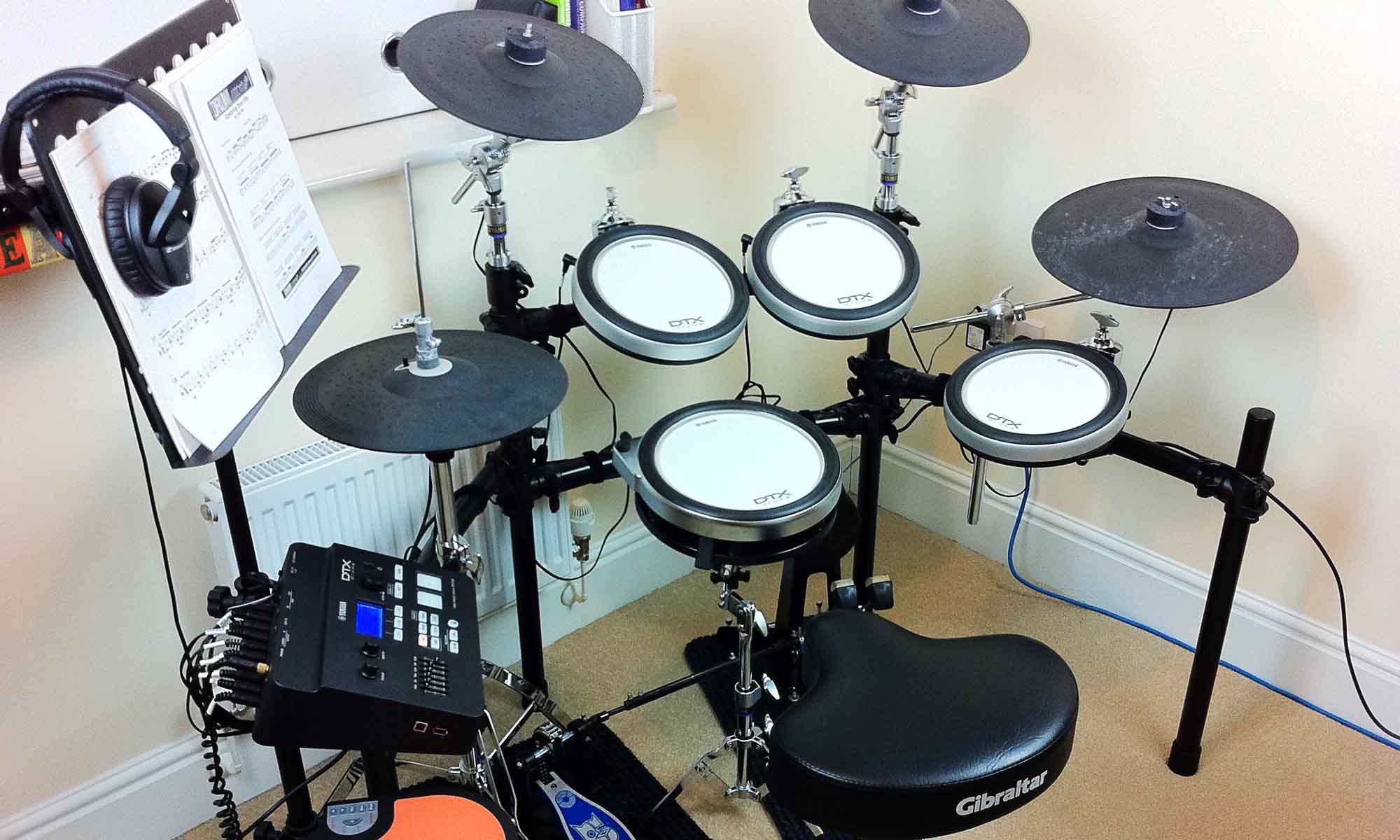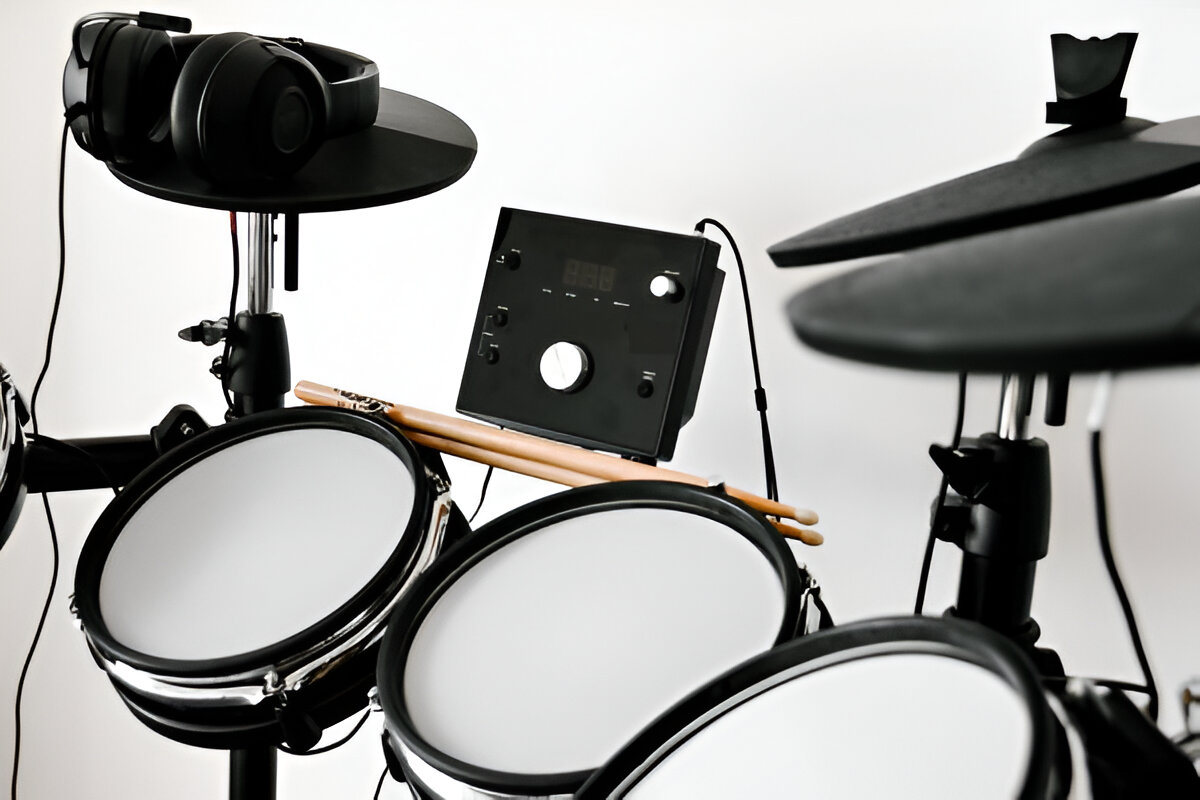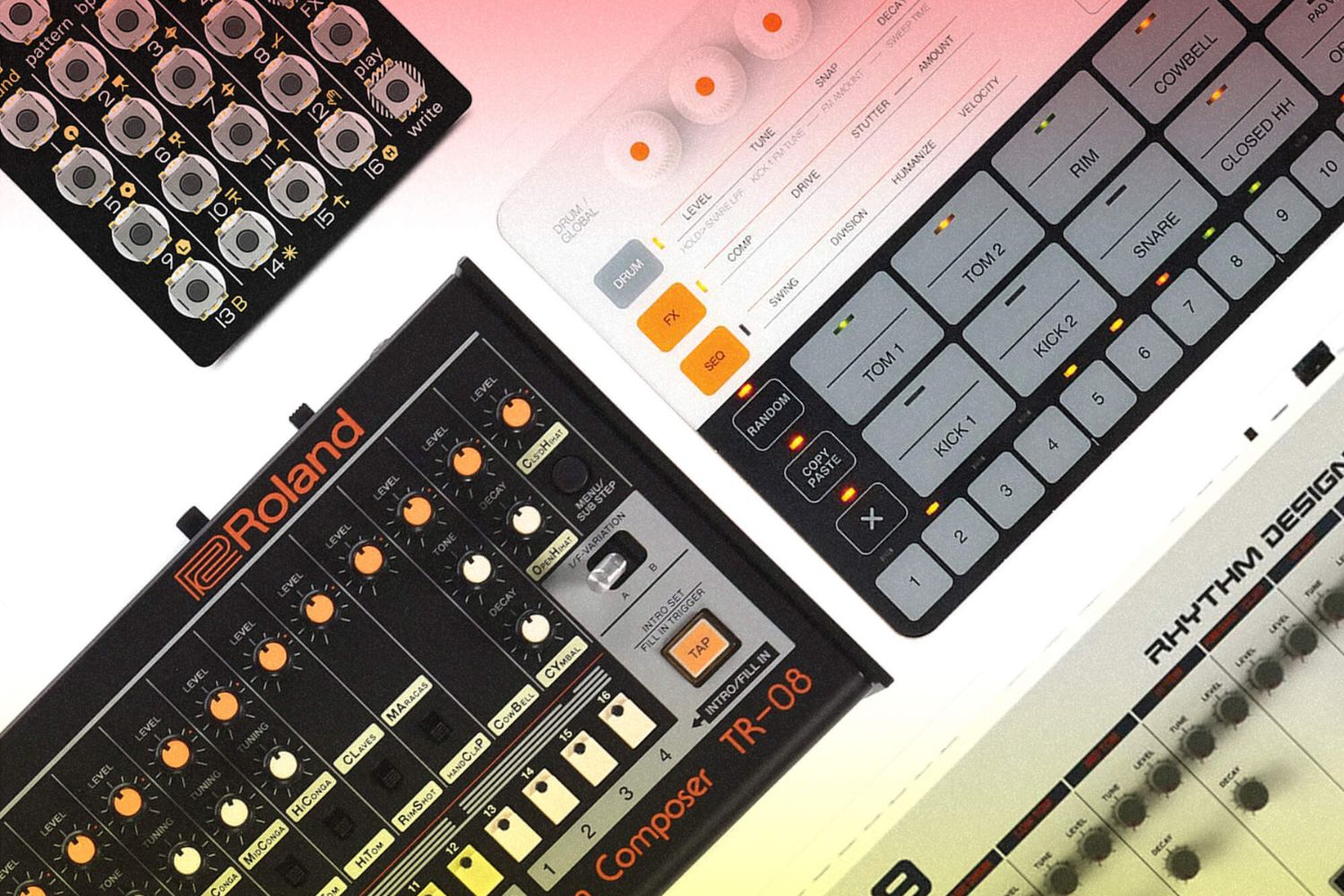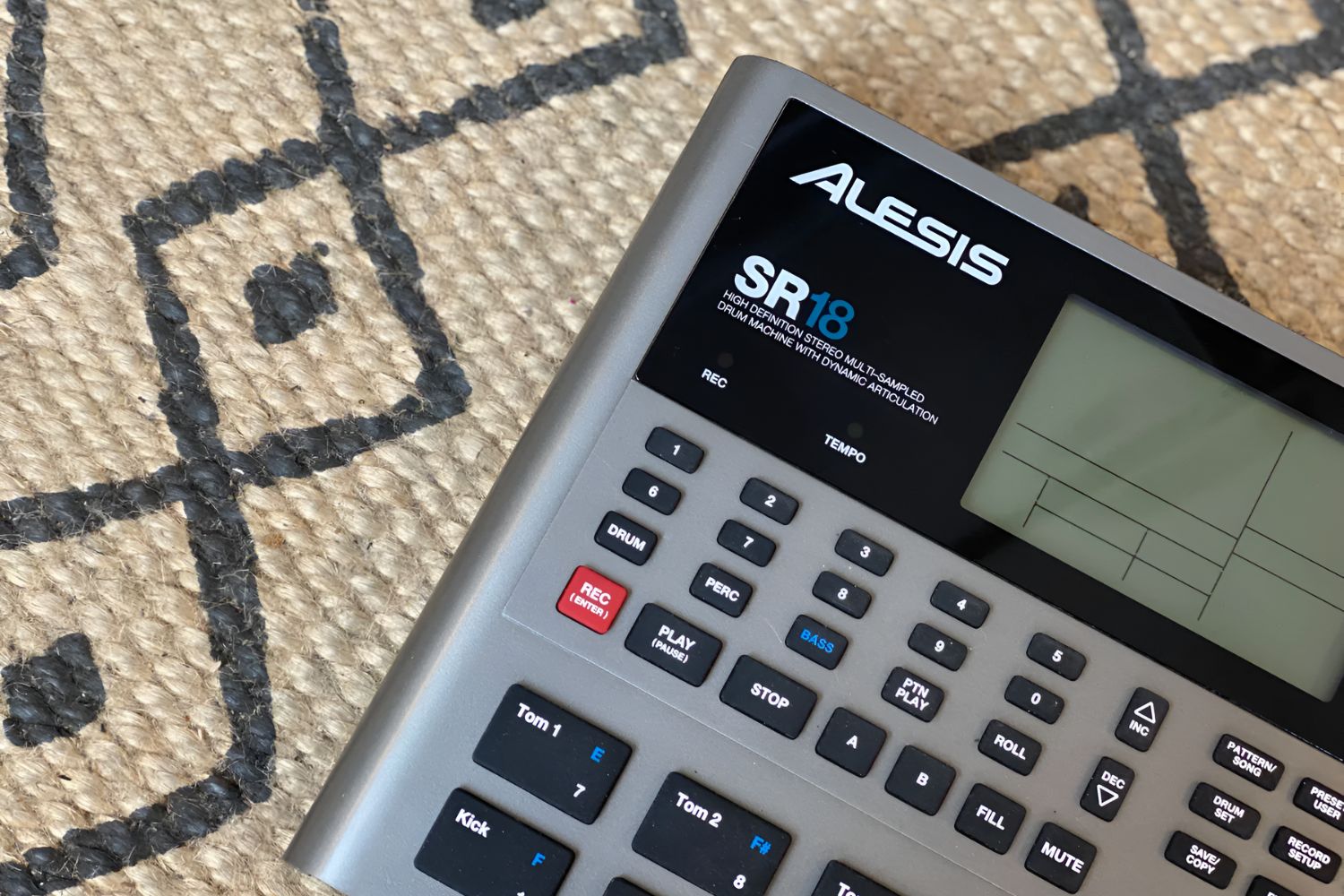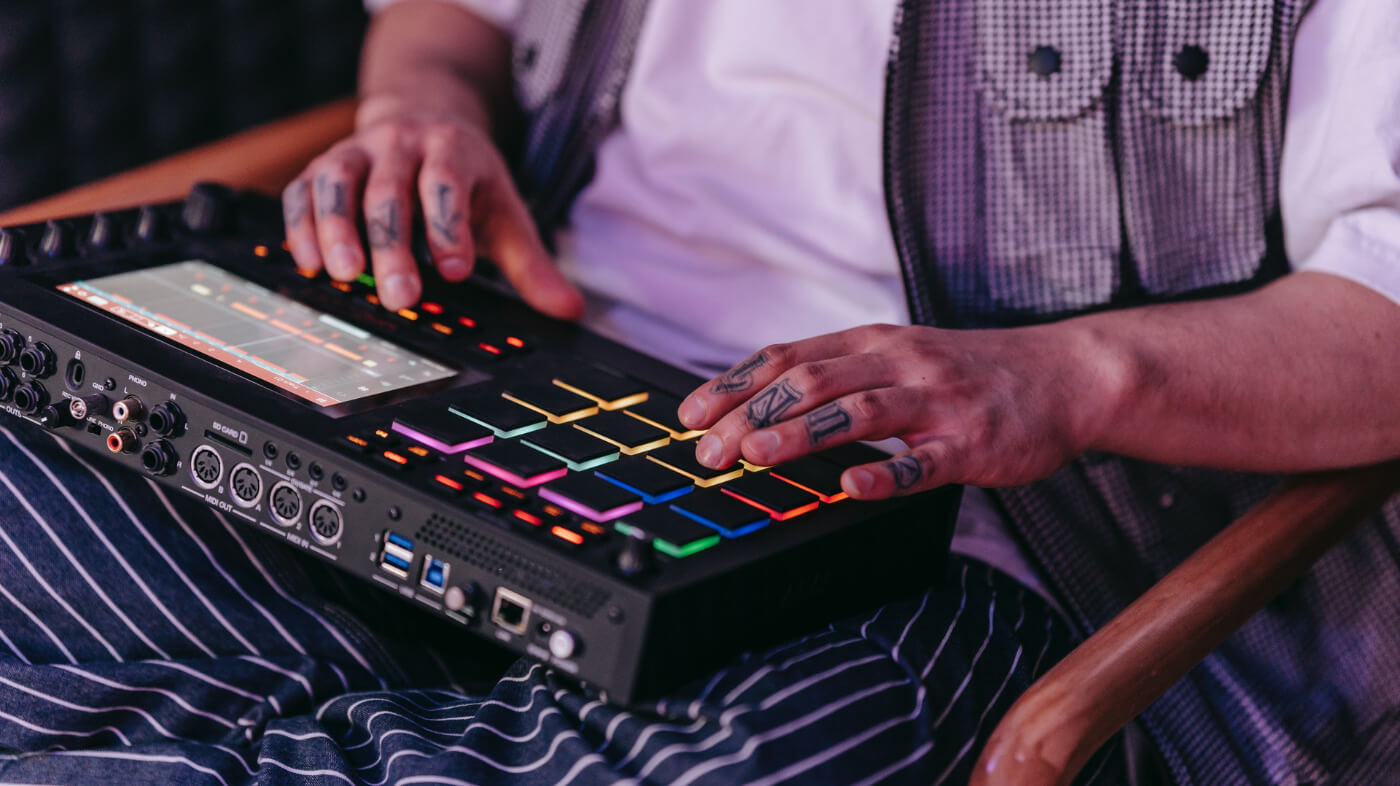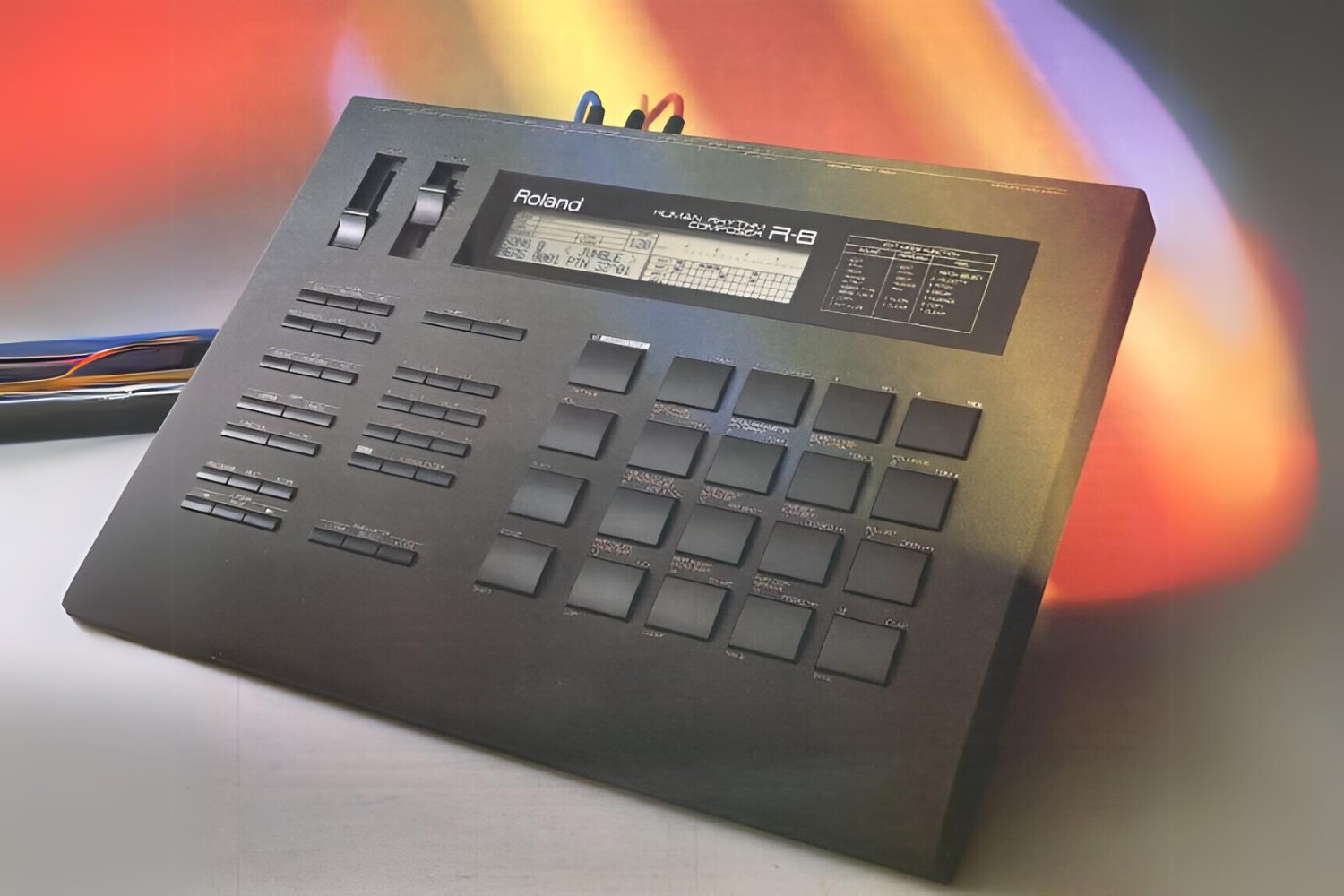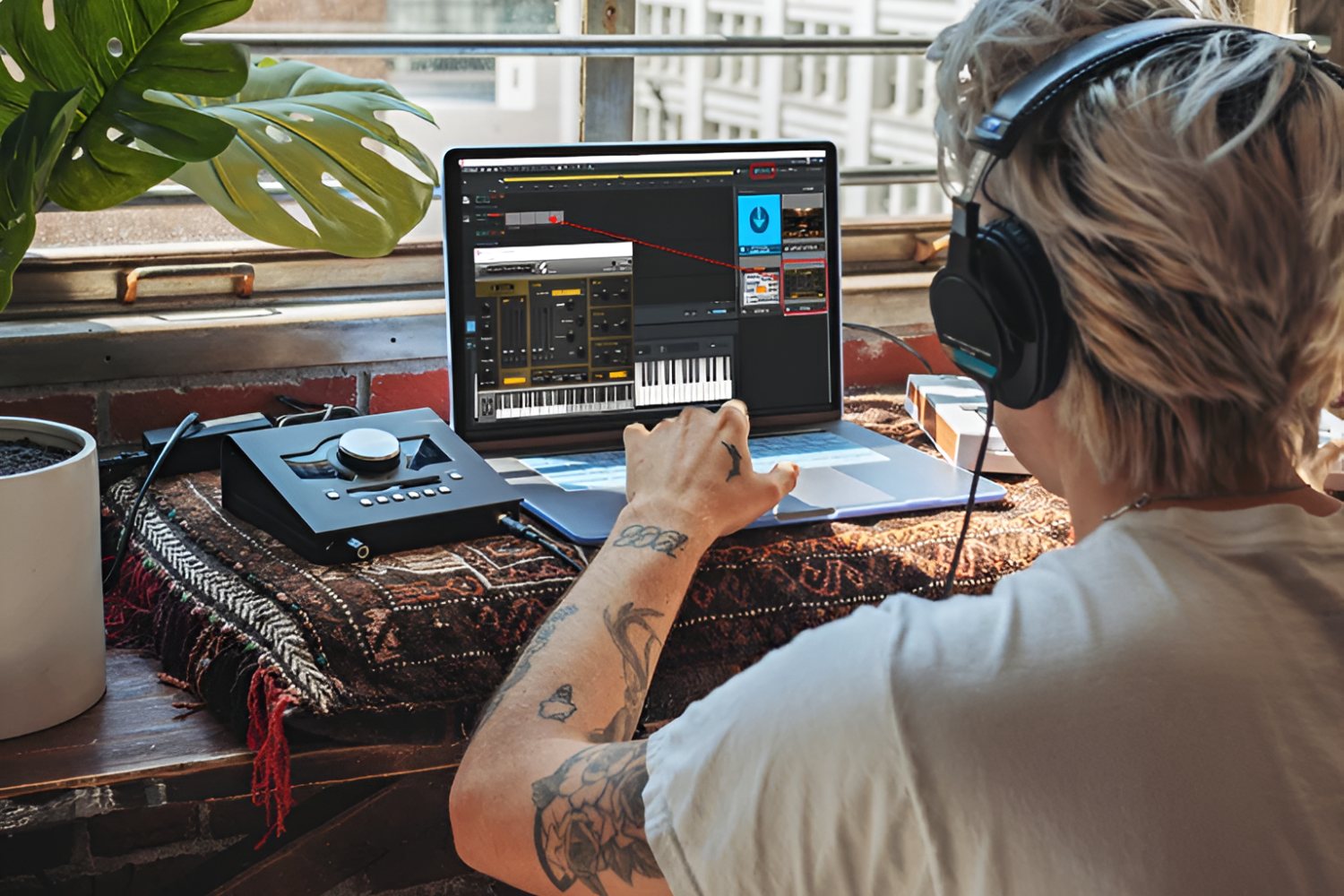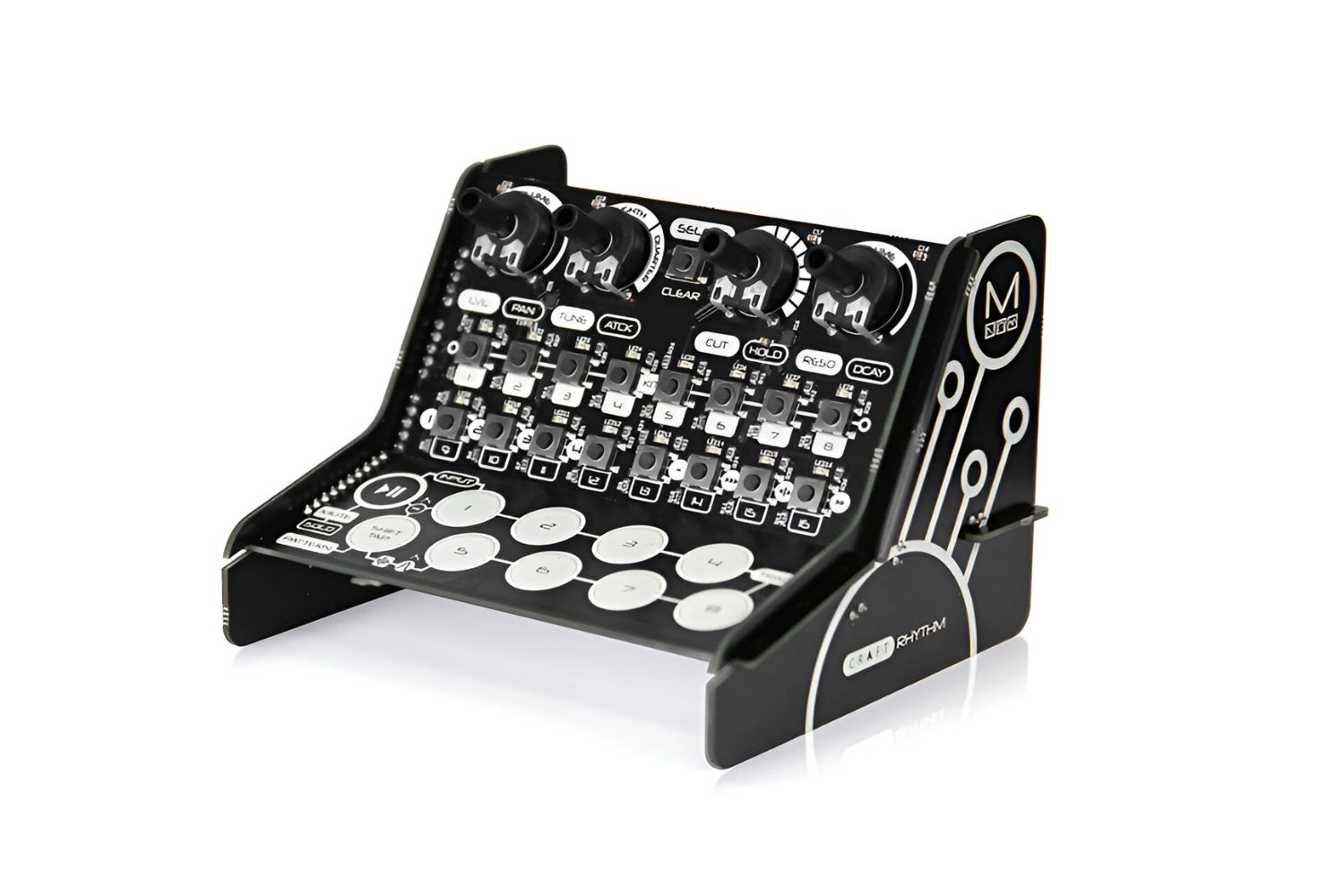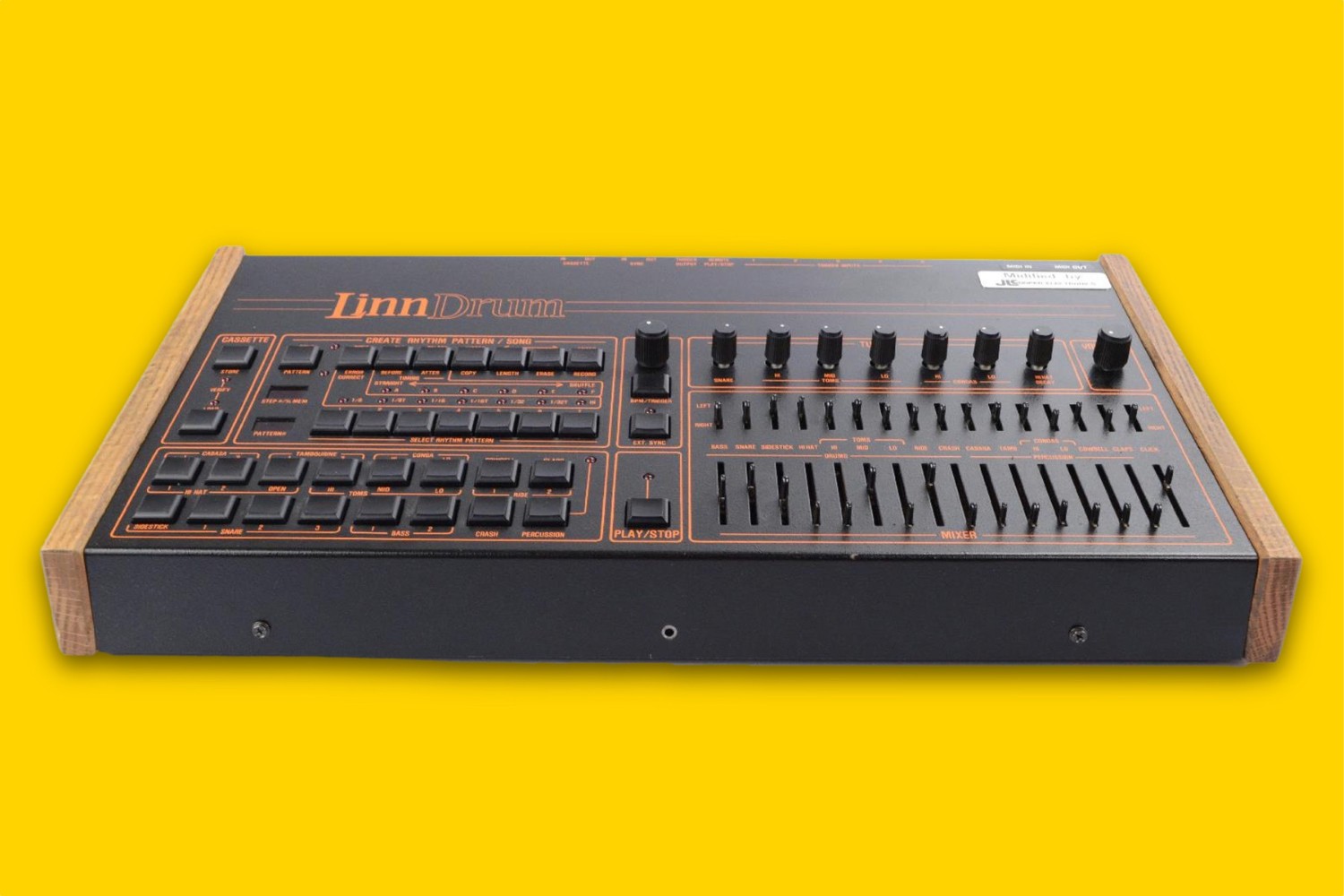Introduction
Electronic drum pads and drum machines have revolutionized the way musicians create and perform music. These innovative tools offer unparalleled versatility, allowing users to explore a wide range of sounds and rhythms with ease. Whether you are a seasoned musician or a budding enthusiast, understanding how to effectively use an electronic drum pad with a drum machine can significantly enhance your musical endeavors.
In this comprehensive guide, we will delve into the intricacies of electronic drum pads and drum machines, exploring the seamless integration of these instruments to unlock a world of creative possibilities. From connecting the electronic drum pad to the drum machine to experimenting with various sound combinations, this article will equip you with the knowledge and skills to make the most of these dynamic tools.
As we embark on this musical journey, you will gain insights into the fundamental principles of electronic drum pads and drum machines, empowering you to harness their potential and elevate your musical compositions. Whether you aspire to craft intricate beats, layer captivating rhythms, or explore innovative soundscapes, mastering the art of using an electronic drum pad with a drum machine is an invaluable asset for any modern musician.
Throughout this guide, we will unravel the technical aspects of setting up and configuring these instruments, while also emphasizing the importance of creativity and experimentation. By the end of this exploration, you will be well-equipped to seamlessly integrate an electronic drum pad with a drum machine, unleashing your creativity and musical expression in exciting new ways.
Join us as we embark on this musical odyssey, where the fusion of technology and artistry converges to inspire and empower musicians of all backgrounds and skill levels. Let's dive into the world of electronic drum pads and drum machines, where endless sonic possibilities await.
Understanding the Electronic Drum Pad
The electronic drum pad serves as a versatile and expressive instrument that enables musicians to produce a wide array of percussive sounds. Unlike traditional acoustic drum kits, electronic drum pads utilize sensor technology to detect and translate the player’s strikes into electronic signals, offering a dynamic and responsive playing experience.
These pads typically feature a rubber or mesh playing surface, providing a tactile feel that mimics the response of acoustic drum heads. The sensitivity of the pads can often be adjusted to accommodate varying playing styles, allowing for nuanced dynamics and articulation.
One of the defining features of electronic drum pads is their ability to trigger a diverse range of sounds and samples. Through the integration of sound modules or software, users can assign different sounds to each pad, effectively transforming the pad into a customizable percussion instrument. This versatility empowers musicians to explore an extensive palette of tones, from classic drum kit sounds to experimental electronic textures.
Furthermore, electronic drum pads often incorporate additional control elements, such as built-in effects, programmable parameters, and performance features. These elements enable users to manipulate and shape their sounds in real time, fostering a dynamic and interactive playing experience.
Understanding the intricacies of the electronic drum pad’s functionality is essential for harnessing its full potential. By familiarizing oneself with the pad’s sensitivity settings, sound assignment capabilities, and control options, musicians can tailor their playing experience to suit their creative vision.
Whether used as a standalone instrument or in conjunction with a drum machine, the electronic drum pad offers unparalleled flexibility and sonic versatility. Its ability to adapt to various musical genres and performance contexts makes it an indispensable tool for modern musicians seeking to expand their sonic horizons.
As we delve deeper into the realm of electronic percussion, we will explore the seamless integration of the electronic drum pad with a drum machine, unlocking a myriad of rhythmic possibilities and creative opportunities.
Connecting the Electronic Drum Pad to the Drum Machine
Connecting an electronic drum pad to a drum machine is a straightforward process that paves the way for an immersive and dynamic musical experience. The integration of these two instruments allows for seamless interaction, enabling users to explore intricate rhythms and diverse soundscapes with ease.
Most electronic drum pads feature MIDI (Musical Instrument Digital Interface) connectivity, which serves as the primary method for linking the pad to a drum machine. MIDI allows for the transmission of performance data, including note triggers, velocity, and other musical parameters, between the drum pad and the drum machine.
To establish the connection, a standard MIDI cable is used to link the MIDI output of the electronic drum pad to the MIDI input of the drum machine. This direct connection ensures that the drum machine receives the performance data from the drum pad, allowing it to trigger the corresponding sounds and respond to the player’s input in real time.
Furthermore, many modern electronic drum pads and drum machines support USB connectivity, offering an alternative method for linking the two devices. By connecting the drum pad and drum machine via USB, users can benefit from streamlined integration and simplified setup, eliminating the need for traditional MIDI cables.
Once the physical connection is established, it is essential to configure the MIDI settings on both the drum pad and the drum machine to ensure proper communication between the two devices. This may involve assigning MIDI channels, addressing note mappings, and adjusting velocity sensitivity to align with the user’s preferences and performance requirements.
By connecting the electronic drum pad to the drum machine, musicians can unlock a wealth of creative possibilities, from layering intricate rhythms and percussive textures to triggering melodic elements and effects. This integration fosters a cohesive and expressive musical environment, empowering users to craft compelling compositions and captivating performances.
As we proceed to explore the setup and utilization of the drum machine in conjunction with the electronic drum pad, we will delve into the intricacies of configuring the drum machine to complement the pad’s capabilities, culminating in a harmonious fusion of rhythm and expression.
Setting Up the Drum Machine
Configuring the drum machine is a pivotal step in harnessing its full potential and integrating it seamlessly with the electronic drum pad. The drum machine serves as a versatile rhythm generator, offering a diverse array of percussive sounds and patterns that can complement and enhance the musical compositions created with the electronic drum pad.
Upon powering up the drum machine, users are greeted with a comprehensive interface that allows for the manipulation of various parameters, including sound selection, pattern creation, tempo control, and performance settings. Familiarizing oneself with the layout and functionality of the drum machine is essential for navigating its capabilities and tailoring it to suit specific musical requirements.
One of the primary tasks in setting up the drum machine involves selecting and assigning sounds to individual pads or instruments. Modern drum machines often feature an extensive library of high-quality drum and percussion sounds, encompassing classic acoustic kits, electronic samples, and synthesized textures. Users can curate their sound palette by choosing sounds that complement their musical style and artistic vision.
Additionally, drum machines offer extensive pattern sequencing and editing capabilities, allowing users to create and modify rhythmic arrangements with precision. Whether crafting intricate drum patterns, programming melodic sequences, or layering dynamic textures, the drum machine’s sequencer empowers users to realize their creative ideas with flexibility and control.
Furthermore, the drum machine’s tempo and timing parameters play a crucial role in shaping the rhythmic foundation of musical compositions. Users can adjust the tempo to suit the desired pacing of their compositions, while also exploring features such as swing, shuffle, and quantization to infuse rhythmic variations and nuances into their patterns.
Integration with the electronic drum pad involves configuring the drum machine to respond to MIDI input from the pad, ensuring that the triggered sounds and patterns align harmoniously with the user’s performance. This synchronization allows for cohesive and expressive interaction between the two instruments, culminating in a unified musical experience.
By mastering the setup and operation of the drum machine, musicians can harness its rhythmic capabilities to enrich their musical arrangements and performances. The seamless integration of the drum machine with the electronic drum pad opens up a world of creative possibilities, empowering users to explore diverse genres, experiment with rhythmic textures, and craft captivating compositions.
As we delve into the practical utilization of the drum machine in conjunction with the electronic drum pad, we will uncover the art of combining rhythm and innovation to elevate musical expression and creativity.
Playing and Experimenting with the Electronic Drum Pad and Drum Machine
Once the electronic drum pad and drum machine are seamlessly connected and configured, musicians are poised to embark on an exhilarating journey of playing and experimenting with these dynamic instruments. The collaborative interplay between the electronic drum pad and drum machine offers a boundless realm of creative expression and sonic exploration.
With the electronic drum pad serving as a responsive and versatile interface for triggering percussive sounds and samples, musicians can unleash their rhythmic prowess and artistic vision. The tactile feedback of the drum pads, coupled with their dynamic sensitivity, allows for expressive and nuanced playing, enabling users to infuse their performances with personalized flair and emotive depth.
As users strike the drum pads, the drum machine responds by generating a rich tapestry of rhythmic patterns and percussive textures. The seamless integration of the two instruments facilitates real-time interaction, empowering musicians to craft intricate beats, layer compelling grooves, and experiment with diverse sonic landscapes.
Exploring the extensive sound libraries and pattern sequencing capabilities of the drum machine opens up a myriad of possibilities for creating dynamic arrangements and evolving compositions. Musicians can delve into the realm of electronic and acoustic percussion, experiment with melodic elements, and sculpt evolving rhythms that breathe life into their musical creations.
Furthermore, the combination of the electronic drum pad and drum machine enables users to engage in live performance and improvisation, fostering spontaneous creativity and captivating audiences with engaging rhythmic explorations. The intuitive nature of these instruments encourages musicians to push the boundaries of traditional drumming, embracing innovation and pushing the sonic envelope.
Experimentation is at the heart of this musical synergy, as users delve into the realms of genre fusion, rhythmic modulation, and sonic manipulation. The electronic drum pad and drum machine serve as catalysts for sonic innovation, inviting musicians to break free from conventional paradigms and forge new musical frontiers.
By embracing a spirit of playfulness and curiosity, musicians can unlock the full potential of the electronic drum pad and drum machine, transcending the confines of traditional percussion and embracing a world of boundless sonic expression.
As we delve into the realm of live performance and creative exploration with the electronic drum pad and drum machine, we will uncover the art of rhythm and improvisation, where musical expression knows no bounds.
Conclusion
Mastering the art of using an electronic drum pad in conjunction with a drum machine is a gateway to boundless creativity and musical innovation. Throughout this exploration, we have delved into the intricate synergy between these dynamic instruments, uncovering the seamless integration that empowers musicians to craft compelling rhythms and captivating compositions.
From understanding the expressive capabilities of the electronic drum pad to connecting and configuring it with a drum machine, we have navigated the technical and creative dimensions of these instruments. The tactile responsiveness of the drum pads, coupled with the rhythmic versatility of the drum machine, fosters a harmonious union that transcends traditional percussion, offering a canvas for sonic exploration and artistic expression.
By embracing the collaborative interplay between the electronic drum pad and drum machine, musicians are invited to embark on a journey of experimentation and innovation. The fusion of real-time performance and pattern sequencing, coupled with the dynamic control elements of both instruments, invites users to push the boundaries of conventional drumming and embrace a world of sonic possibilities.
Furthermore, the integration of these instruments extends beyond the confines of studio production, inviting musicians to engage in live performance and improvisation. The intuitive nature of the electronic drum pad and drum machine empowers users to captivate audiences with captivating rhythms, spontaneous creativity, and genre-defying sonic landscapes.
As we conclude this exploration, it is evident that the fusion of technology and artistry in the form of the electronic drum pad and drum machine opens up a world of endless potential for musicians of all backgrounds and skill levels. Whether crafting intricate beats, layering captivating rhythms, or exploring innovative soundscapes, the seamless integration of these instruments empowers users to transcend the ordinary and embrace the extraordinary in their musical endeavors.
So, let us embrace the rhythmic synergy of the electronic drum pad and drum machine, where creativity knows no bounds and innovation thrives. The journey of sonic exploration and musical expression continues, inviting us to push the limits of what is possible and redefine the art of rhythm in the modern era.







